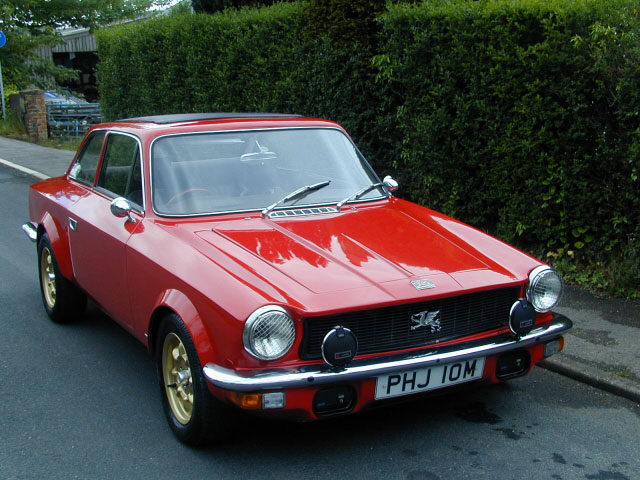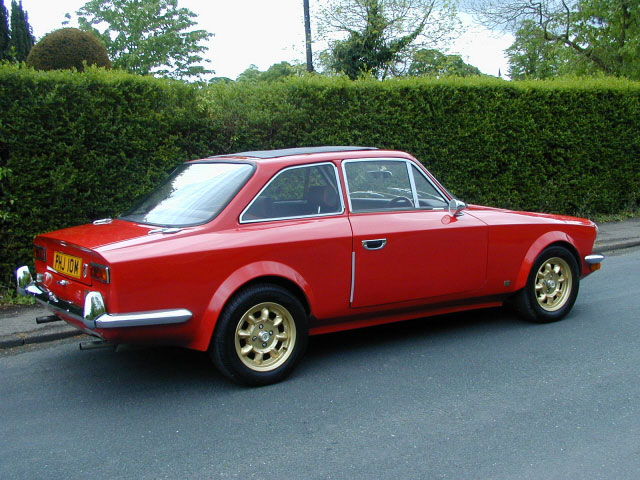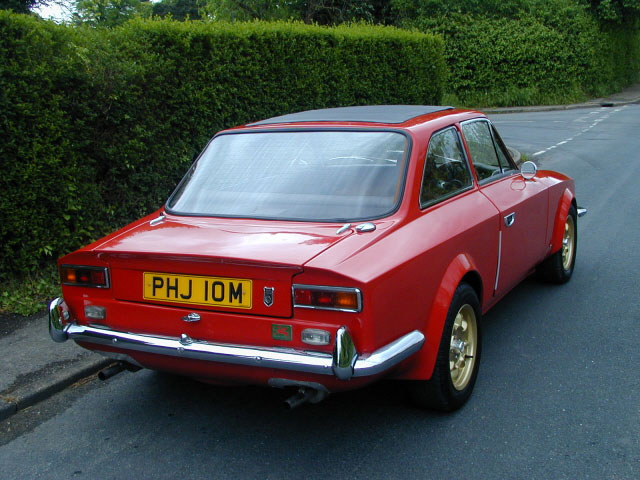Click VOTE above the topic title to request this model for Forza Horizon.
Reply below with details about the model version you’d prefer.
1973 Gilbern Invader III
Country of Origin: Wales (UK)
Design Info: The Invader was an evolution of Gilbern’s previous model, the Genie, with a stouter chassis, better brakes, and power windows. It was Gilbern’s ultimate expression of the “glassfibre special”, a particularly (but not exclusively) British trend of building exotically-styled bodies of fiberglass to use with more mundane mechanicals to create desirable but inexpensive sports cars. Unlike previous Gilbern models, the Invader was sold as a factory-complete car instead of a kit-car (although Gilberns were kit-cars primarily for tax purposes, mostly complete anyway). The Invader was available as a two-door coupe or three-door estate. The Invader II improved several design flaws of the original, and the Invader III was further restyled and featured a wider track width.
Engine Info: The Gilbern Invaders were equipped with the 3.0 liter Ford Essex V6, a mainstay of British motoring which could also be found in the AC 3000ME, Reliant Scimitar, Marcos GT, and several models of TVR. This engine made 141 hp, which in the Invader was good for a 0-60 time of 8.1 seconds when paired with the 5-speed manual transmission.
Type: The Gilbern Invader shares much with other British fiberglass sports cars of the time, including the Marcos 3-Litre and TVR Tuscan V6, with which it shares an engine. Other such cars include the Elva Courier (one of the inspirations for the original Gilbern GT), Lotus Elite, and Ginetta G15. Mention should also be made of another car which shared its engine and was at least partly to blame for Gilbern’s eventual demise: the Mk 1 Ford Capri 3000 GT.
History: Giles (Gil) Smith, a Welsh butcher, and Bernard (Bern) Friese, an engineer and former German POW who remained in Britain after the war (partially due to meeting his future wife during one of his frequent nightly excursions, “hopping the fence” at the prisoner camp where he was held), partnered together to create a one-off fiberglass sports car for personal use in 1959. Friese was already experienced with fiberglass molding automotive bodies, and the partners found a local race car driver, Peter Cottrell, to consult on and test the car. When the first car was completed (in a workspace above an abattoir), Smith and Cottrell agreed that the result was too good not to produce and sell commercially. Thus, the Gilbern partnership entered the automotive industry.
The first car, the Gilbern GT, was built primarily of BMC components and engines ranging from 1.0 to 1.8 liters. While first sold as a true kit car for home assembly, this proved unpopular and the company transitioned to selling mostly complete cars that only needed to be bolted together, advertised as the work of a weekend. The purpose of this was largely to avoid the value-added tax, as British law at the time allowed kit cars to avoid this tax assuming certain standards were followed. It was relatively popular for such a small marque, eventually selling about 200 units, and it often appeared in small racing events, hill climbs, and the like.
The second model, the Genie, was a larger car first shown in 1966 at the London Motor Show. Still made largely with BMC parts, the Genie’s engine was standardized to the Ford Essex V6 at either 2.5 or 3.0 liter displacement. As compared to the GT, the Genie had more subdued styling but was nevertheless considered handsome and was well-liked by customers. The company even managed to get Prince Charles into a Genie for a short time, though when BMC found out about the arrangement, they jealously sabotaged Gilbern by gifting him an MG MGC GT, which became his preferred car. If the Prince had instead stuck with the Gilbern, perhaps the company would still be around today.
It may have been this betrayal that pushed Gilbern to quickly drop the Genie in favor of the new Invader. While the Invader’s styling was not at first a wildly significant change from the Genie, and likewise the car’s underpinnings were just an evolution of the previous model, there was a concerted effort to move to using as many Ford components as possible. For the duration of Gilbern’s production, BMC had forced Gilbern to purchase components at commercial value, as the amount of parts ordered was deemed too low to justify wholesale discounts. Additionally, British VAT exemptions for kit cars were ending, driving up the final price of Gilbern’s cars. By the time the Invader III was launched in 1972, it used Cortina suspension instead of MG parts and had adopted the Capri 3000GT’s higher tuned version of the Essex V6. It was also no longer cheap, with its price having risen to about £2600, or around £30,000 ($37,000) today.
Problems behind the scenes at Gilbern, however, were evident well before this. While Giles and Bernard had managed to keep the company on its feet and even make a profit in the early years, by 1968 more cash was needed. Later that year they sold the company to Ace Capital Holdings, a slot machine manufacturer, with Smith leaving the company almost immediately and Friese remaining for a year to consult and assist in the transition of ownership. Ace itself was purchased by an entertainment company called Mecca in 1970, who in turn sold Gilbern off to Maurice Collins, one of the directors that Ace had installed after their takeover. Collins, two years later, would sell to Mike Leather, the other director under Ace ownership.
This many changes in management certainly took a toll, but the biggest factor in the company’s struggle was always business capital. Even when other “glassfibre specials” were being put out of business by well-priced Jaguars and the significantly cheaper Capri, Gilbern still had more orders than it could fill. Unfortunately, orders without the ability to fill them just meant lost profits, and despite selling just over 600 Invaders from ‘69-’73, the company went bankrupt.
Why it’s cool/unique/significant: Gilbern retains the distinction of being the only Welsh-based company to mass produce cars. It was also a rare (partial) success story from the era of the British “specials”, a time when every other man with a shed and a dream decided to build a car, but few managed to run a company. Gilbern might not have had the dramatic success or longevity of, say, Lotus, but that a Welsh butcher could even be considered competition with Colin Chapman is arguably an achievement in itself.
And compete they did, for even though Gilbern only built about 1,000 cars over the decade and a half of production, their cars earned a great deal of loyalty and affection from their owners. Looking at the title history of a Gilbern, one will often find a car that has been passed down through generations of family members. Likewise, many of the owners of Invaders were also owners of Genies and/or GTs. The 400-odd member Gilbern Owners Club, established all the way back in 1969, is also fairly unique among such clubs as being not just a collection of fans but shepherds of the brand: When the company went under in ‘73, the club salvaged the body molds for the original GT and Invader III, bought the rights to the company name and its associated trademarks, and even maintain a repository of spare parts, which they have produced and shipped worldwide to keep the cars operational. Attempts to revive the brand have sprung up time and time again, but none of these has succeeded – partially due to the careful protection of the brand by this club. Any car that can inspire that sort of devotion is something worth experiencing.




